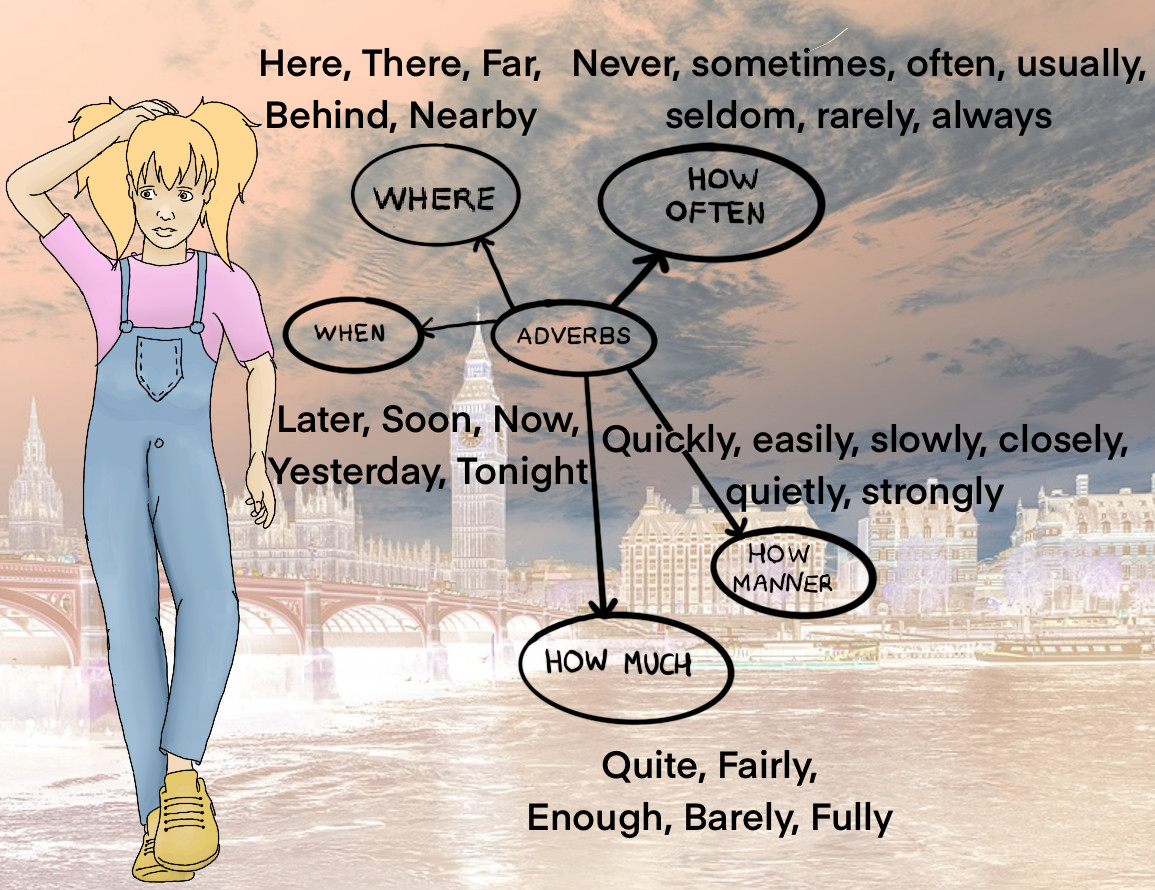
|
 |
 |
|
 |
Using adverbs is a mortal sin, Elmore Leonard.
An adverb is a word that modifies a verb (he writes terribly), adjective (he is quite right), another adverb (she sang very smoothly), or a whole sentence (Fortunately, I was ready for it). Adverbs often end in -ly and typically express manner, place, time, frequency, degree, level of certainty, etc., answering questions such as how?, in what way?, when?, where?, and to what extent? Different kinds of adverbs go in different positions in a sentence.

Adverbs of manner tell us how something happens. Examples are: slowly (The snails were moving very slowly along the ground), quickly (He ran as quickly as he could), noisily, angrily, etc.
They are usually placed after the main verb (she swims fast, he speaks quickly and fluently) or after the object (he reads the essay carefully, he did his work efficiently).

They are placed at the beginning of a sentence (Tomorrow I will be strong, Today I’m going back to school), after the verb (He is often irritable and grouchy) or at the end of the sentence (I will start tomorrow, he was hospitalized yesterday).
Adverbs of frequency are placed before the main verb. For example: I often practice yoga on my own, I always knew she would be the first girl I kissed.
They go between an auxiliary verb and the main verb, e.g., She has never been very strong, I don’t ever drink beer.
However, they come after the verb “to be”, e.g., I am always thinking about you, She is sometimes right. Peter Pan will never grow up.

Adverbs of place, such as back, in, on, over, round, up, here, there, down, etc., tell us where something happens.
They are usually placed after the main verb (I went down the long and spiral staircase, She sat there) or after the object (I met him here).

When there are two or more adverbs, the usual order is manner (how), place (where), and time (when). For example, she sang beautifully at the party yesterday. Put this plate carefully in the fridge right now.
Please, make sure that you have really understood it with our Quiz.